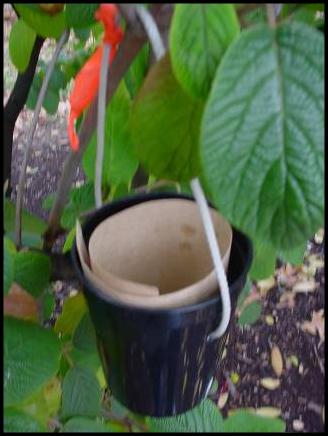
|
CDC Miniature Light Trap |
|
Net and trap cup: where the insects get caught. |
|
This trap is generally used to assess general population numbers of blood feeding insects |
|
Cooler: contains dry ice. When the ice sublimes (turns to CO2 gas), blood feeding insects, such as mosquitoes, detect it and think that the gas is coming from an animal or person that is breathing. This draws the insects close to the trap. |
|
Light: attracts insects closer to the trap |
|
This trap samples specifically for relative numbers of female mosquitoes that are gravid, which means ready to lay eggs. |
|
Gravid Trap |
|
Water: Used as a bait to attract female mosquitoes to lay their eggs. The water can be fresh or stagnant. |
|
Fan and Net: When the mosquito flies over the water to lay her eggs, the fan sucks her and others into a net. |
|
Oviposition Cup |


|
Often called a ‘can trap’, this trap also samples specifically for relative numbers of female mosquitoes that are gravid, and often use tree holes and small containers to lay their eggs. These traps are often made from black plastic cups or black painted coffee and soup cans. A small piece of seed paper is often place inside along with some water. |



|
Photo: L. Minter, 2007 |
|
Vector researchers and public health authorities use a variety of traps and techniques to assess vector populations and the risk of disease. Diagramed below are some of the most common trap types and how they work. If you see one of these traps set-up, please do not disturb it. If you see a trap have any questions about the it, please contact the lab or agency on the trap ID label. |
|
Photo: L. Minter, 2007 |
|
Photo: L. Minter, 2007 |

|
Fan: blows insects into net |
|
How the Traps Work |
